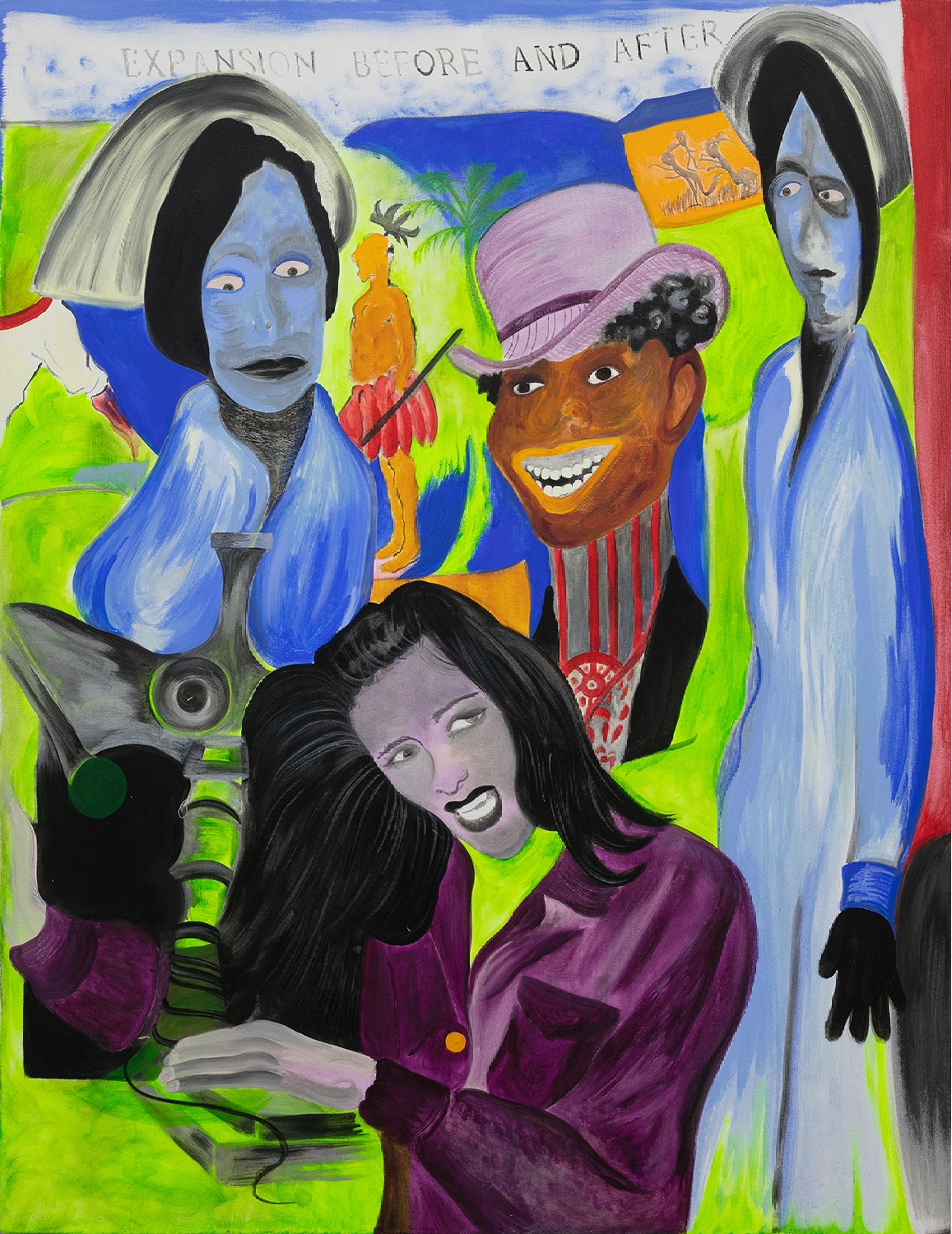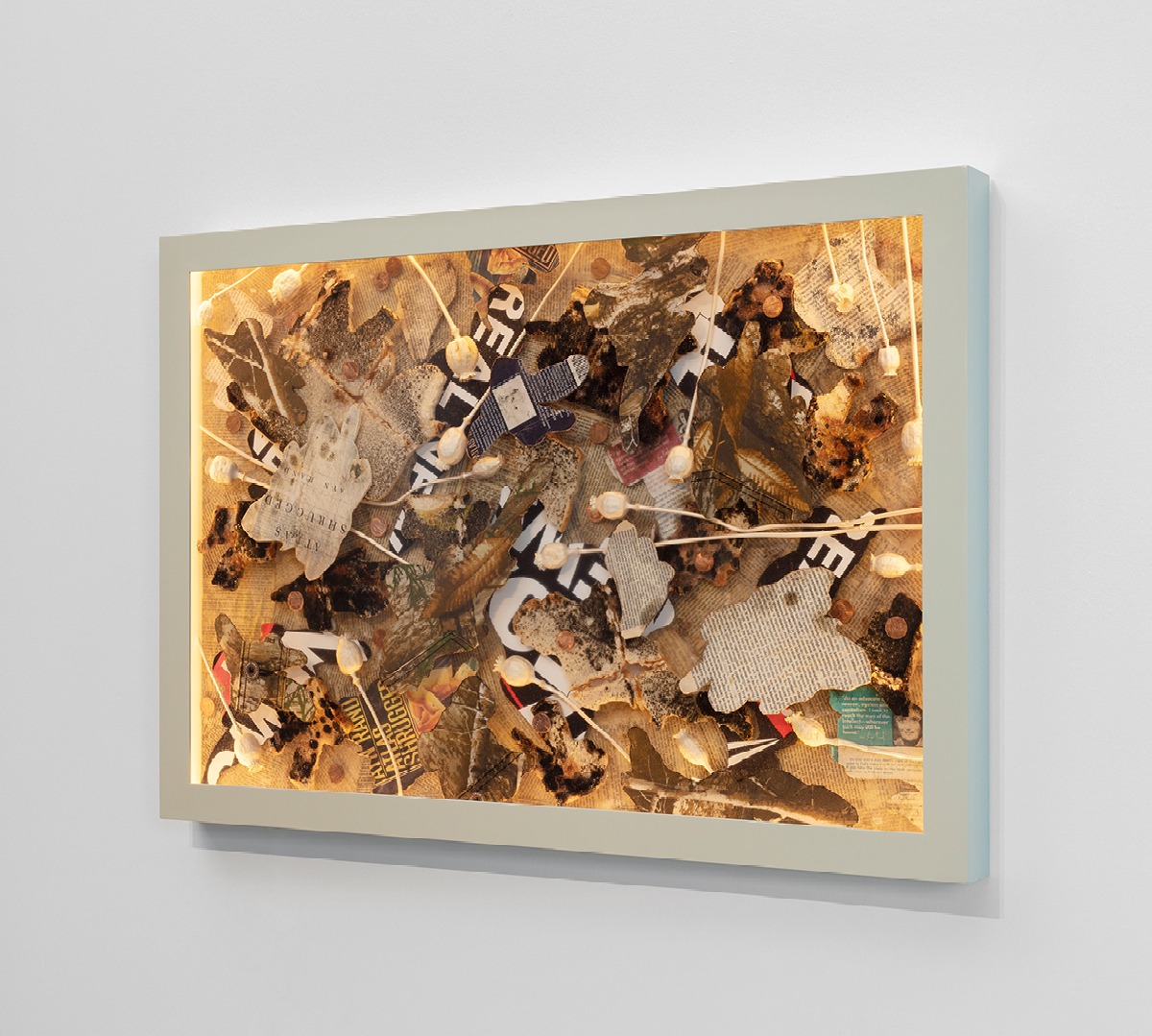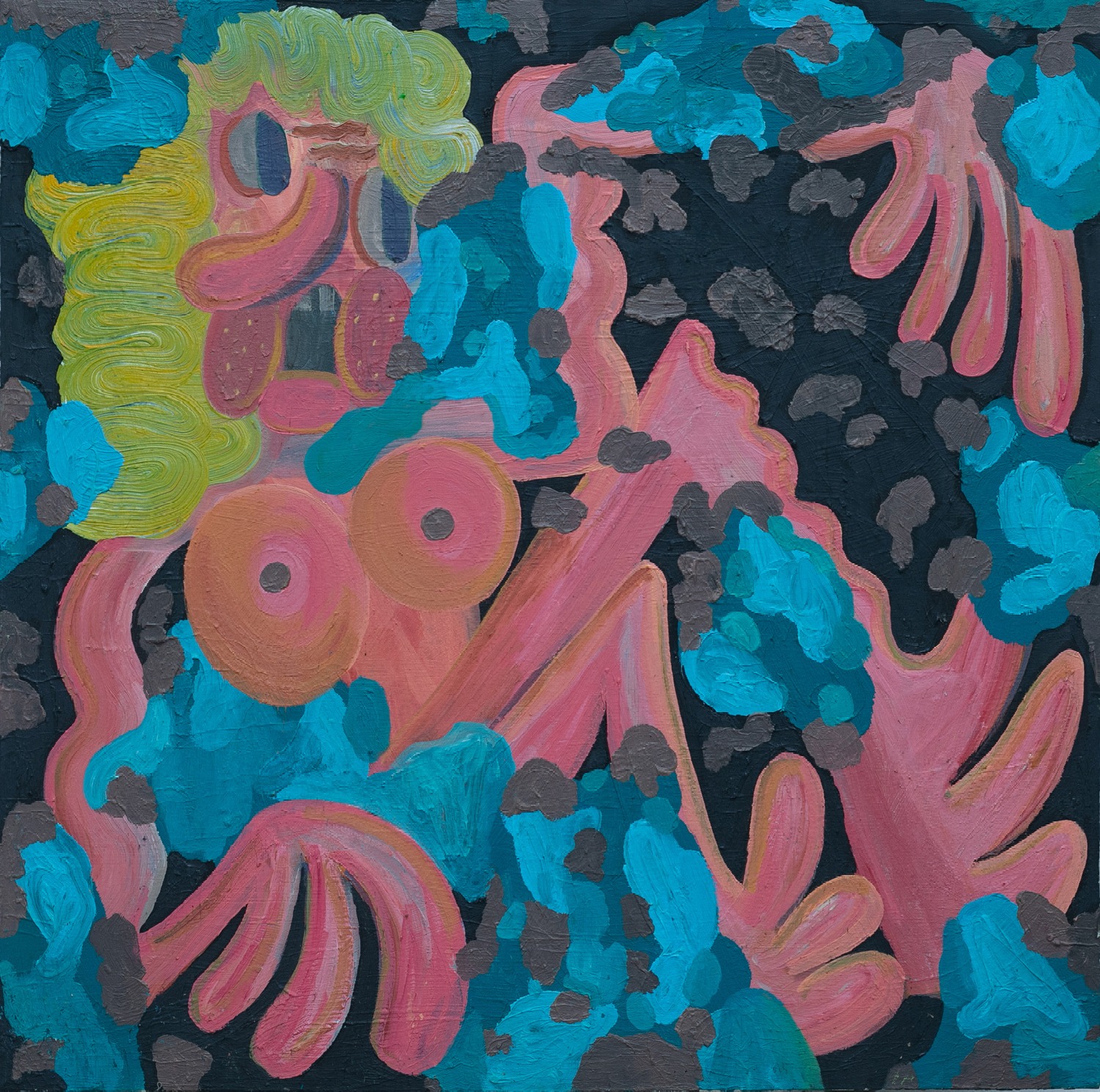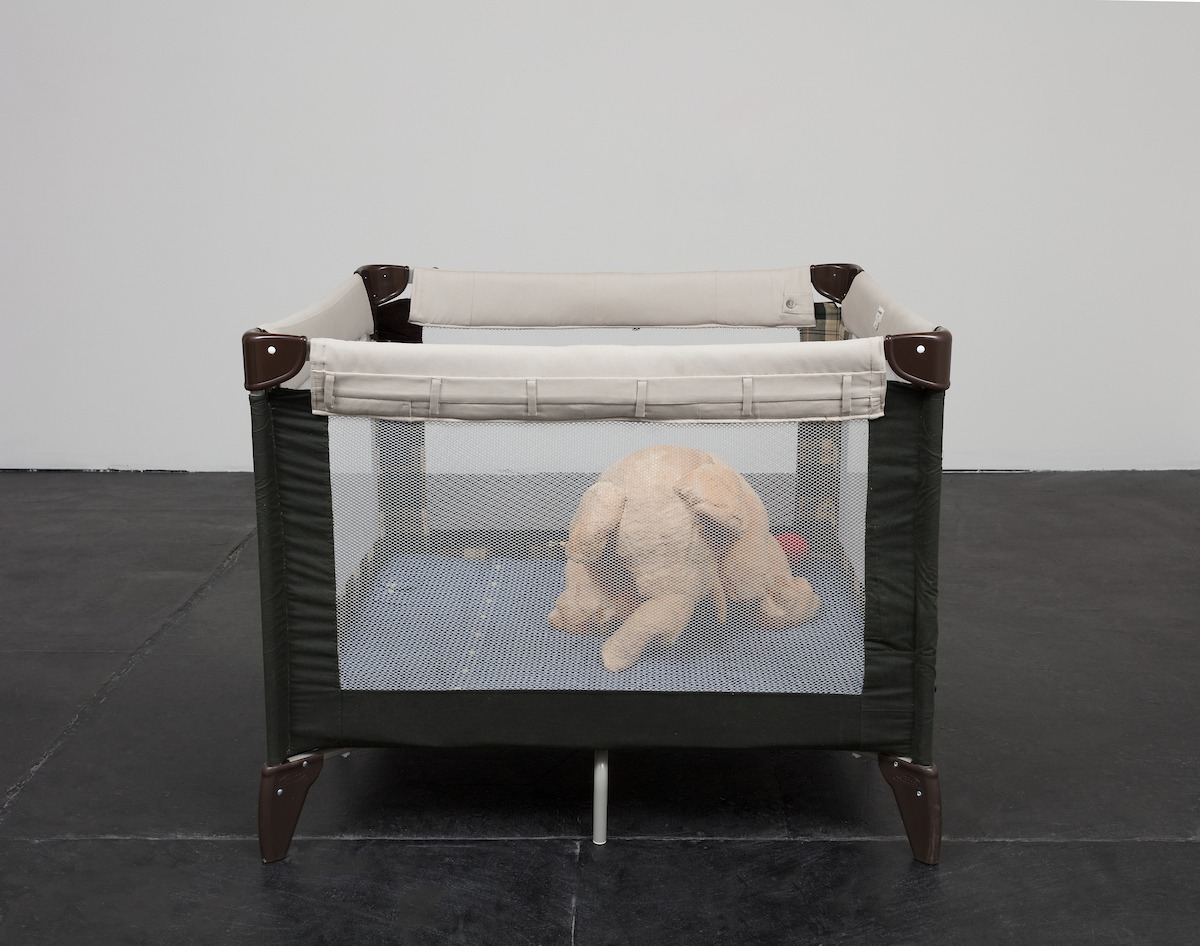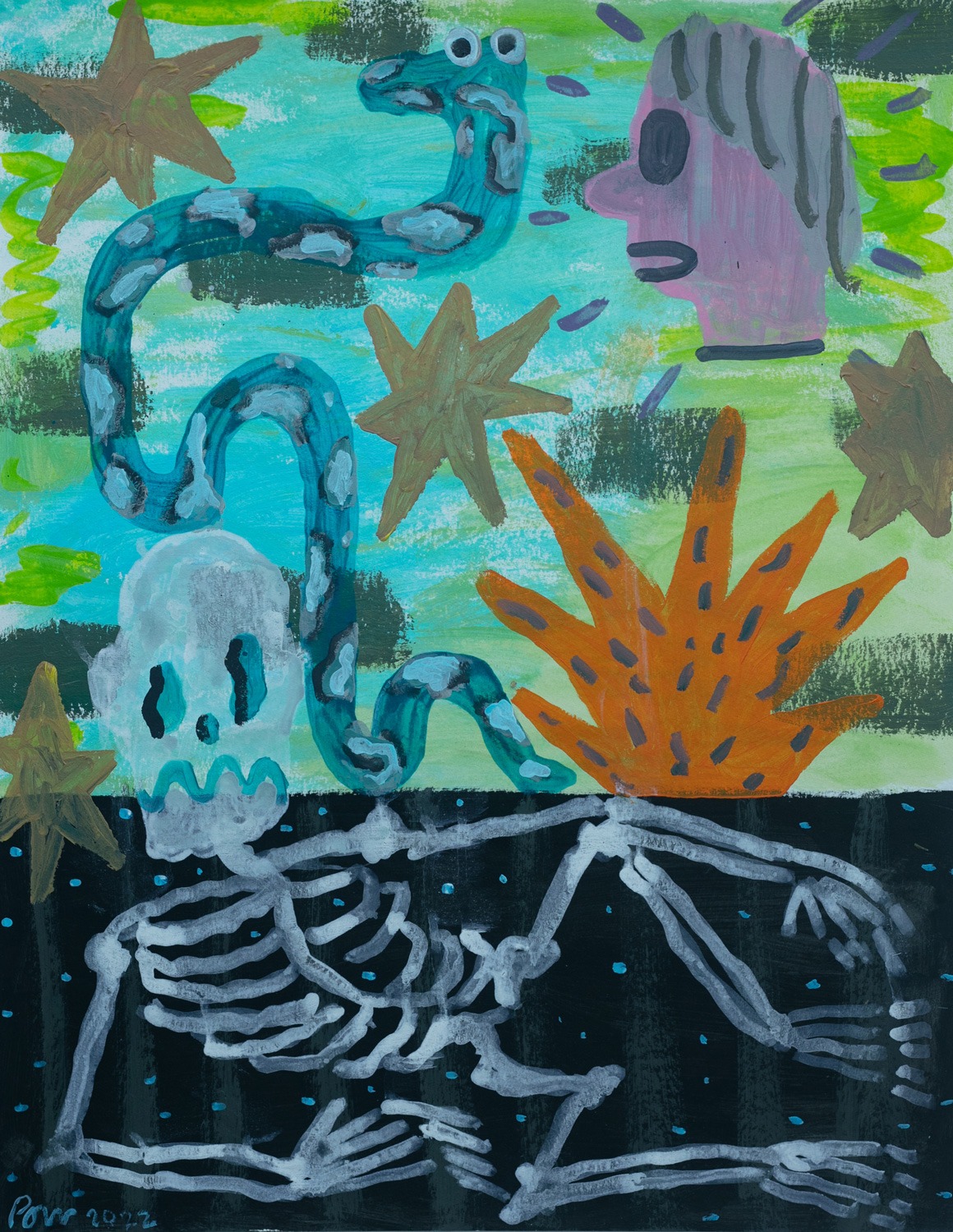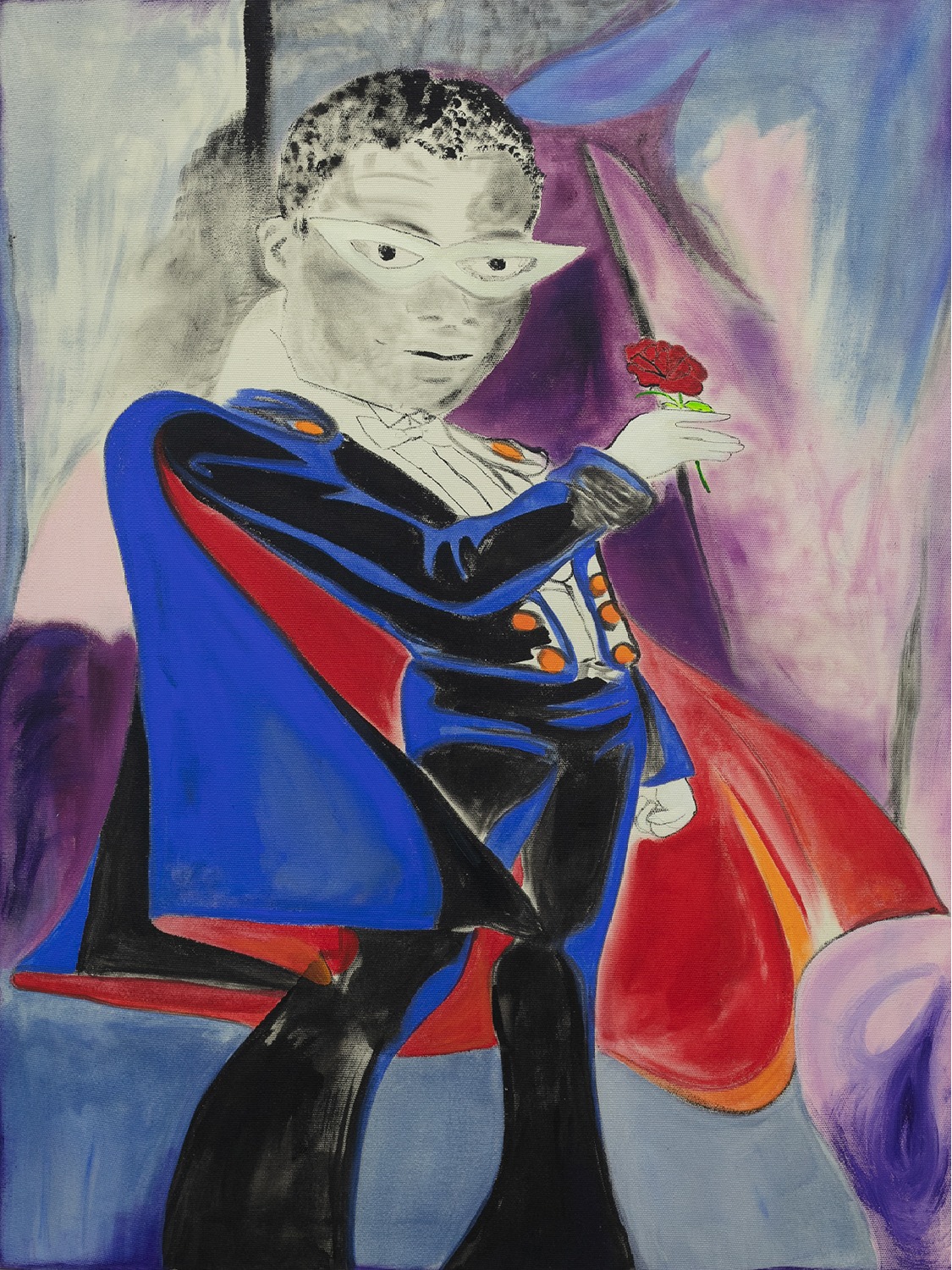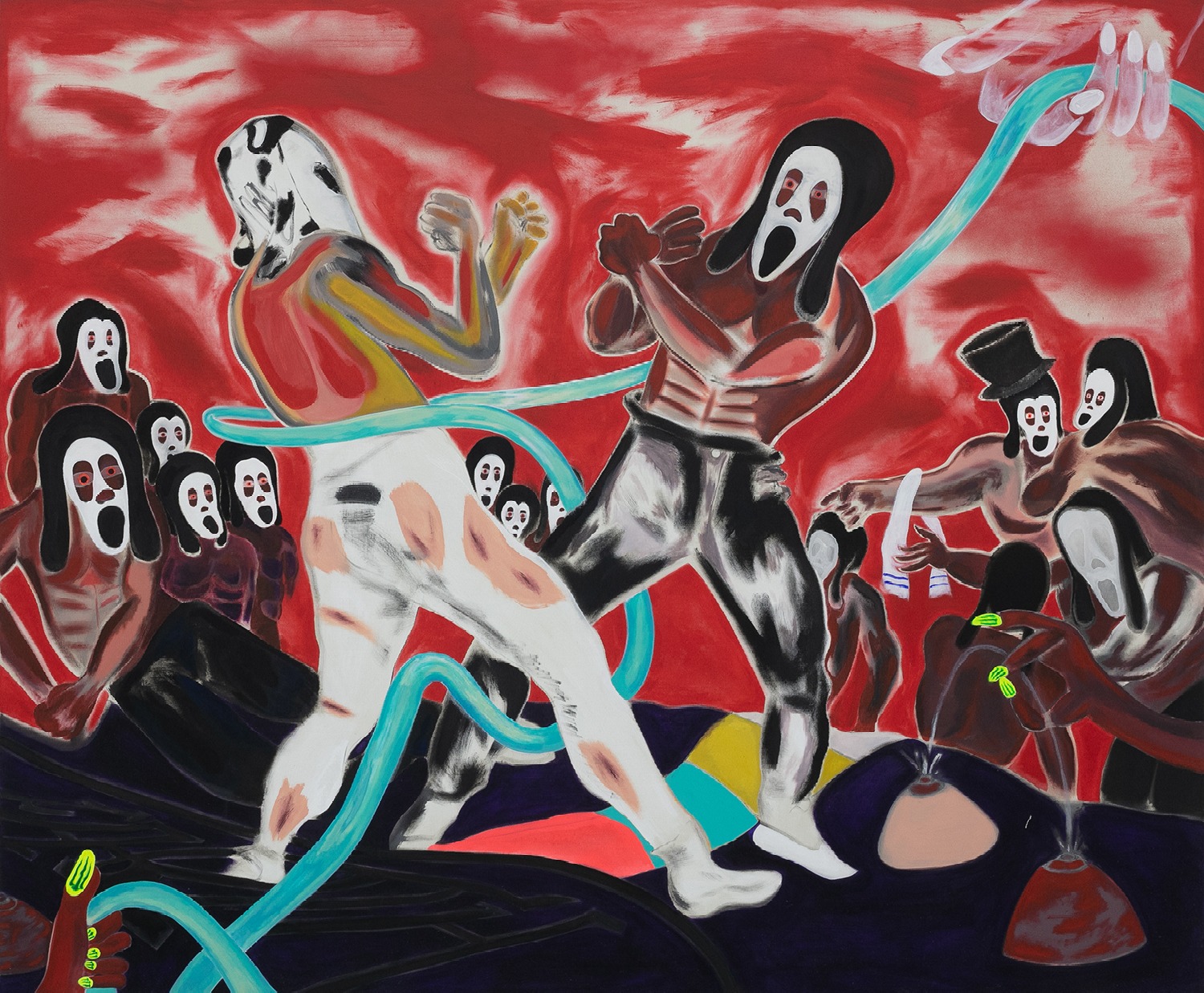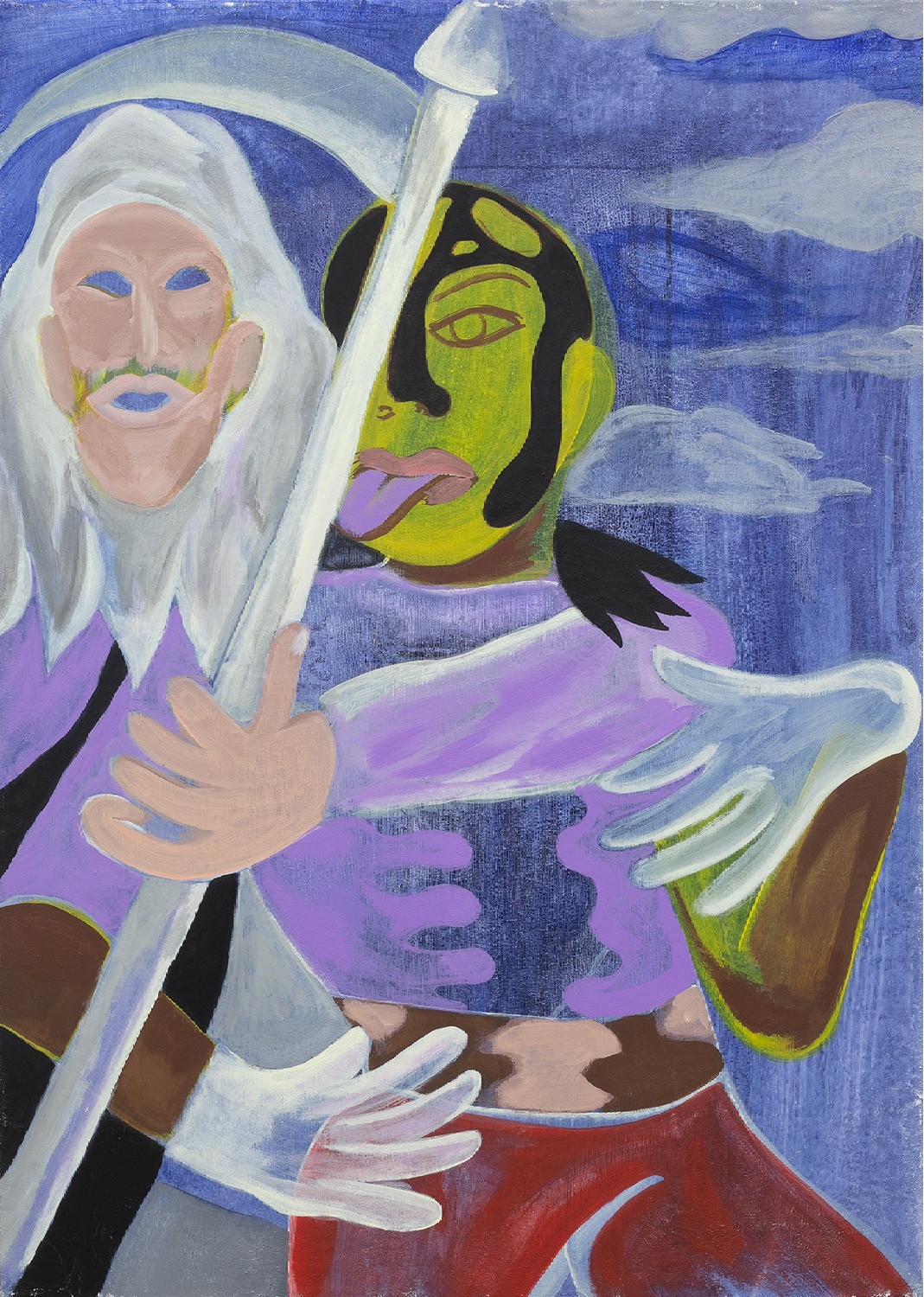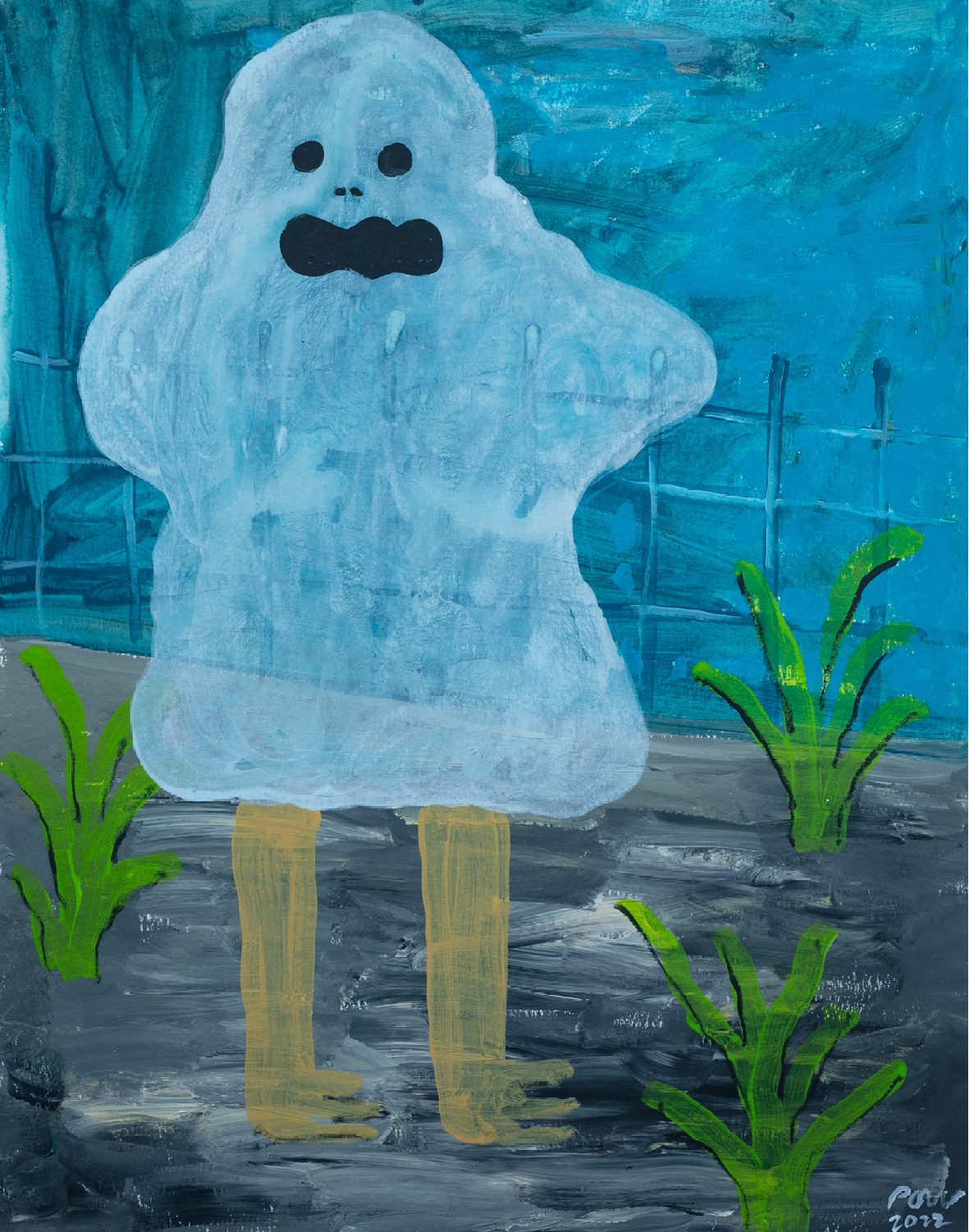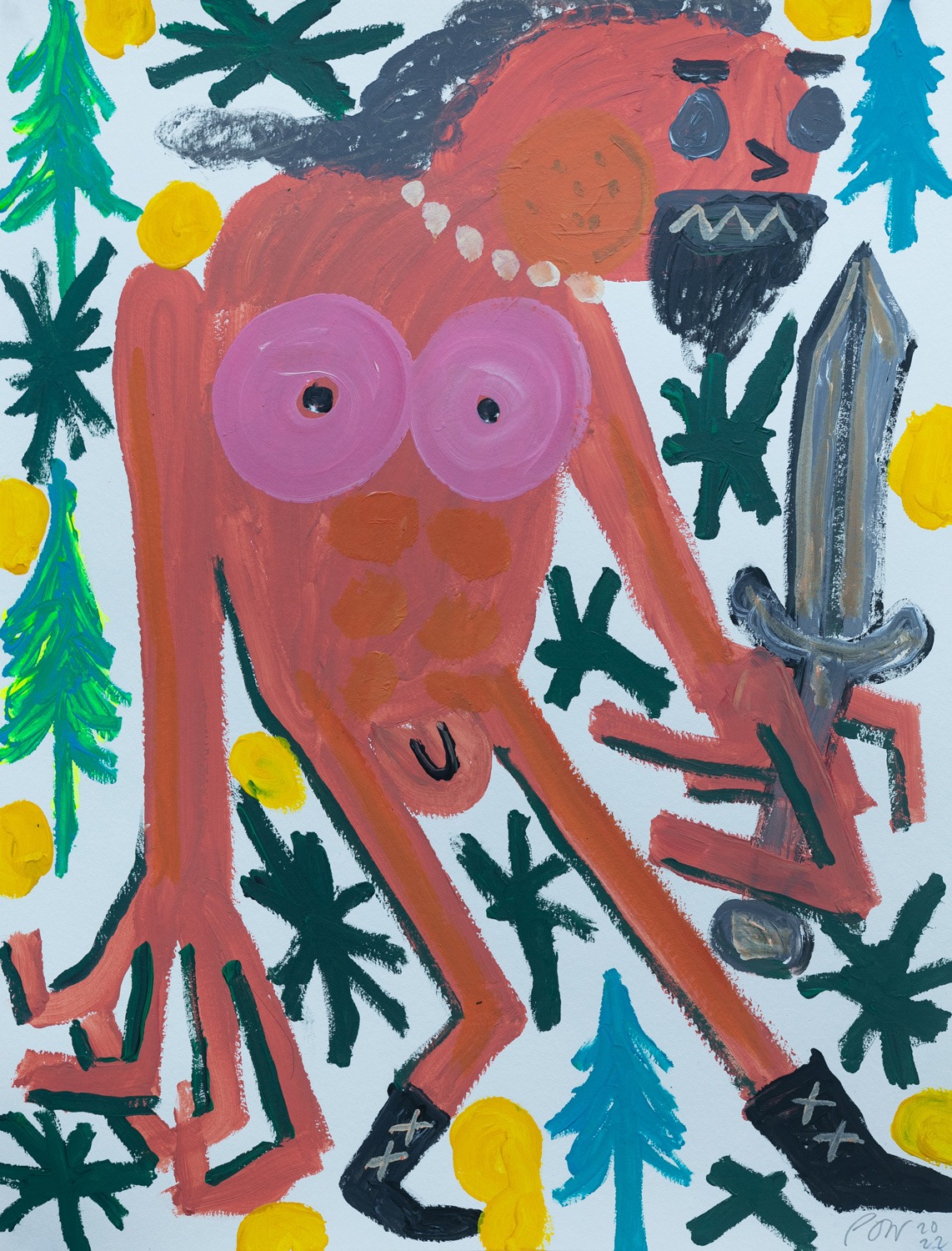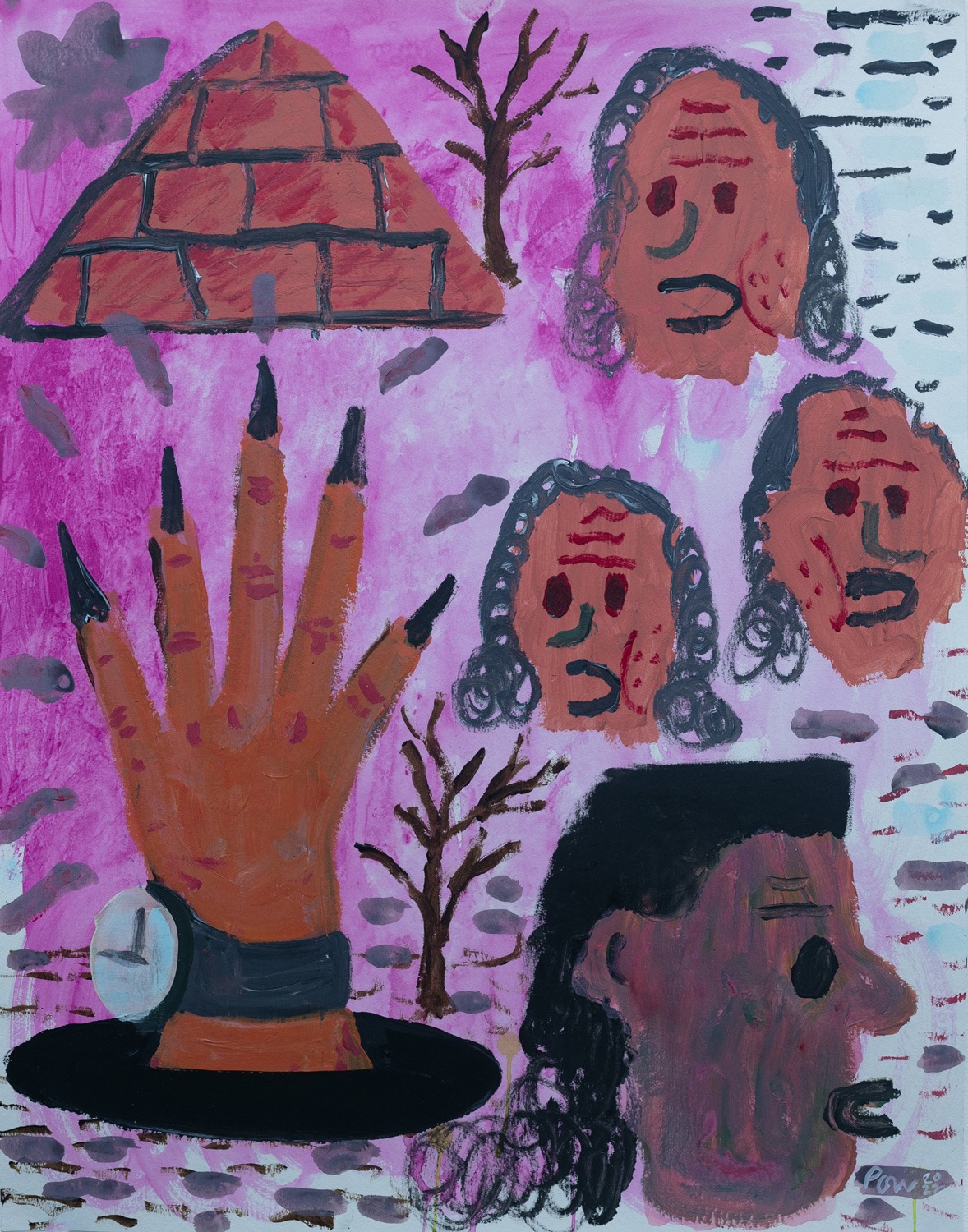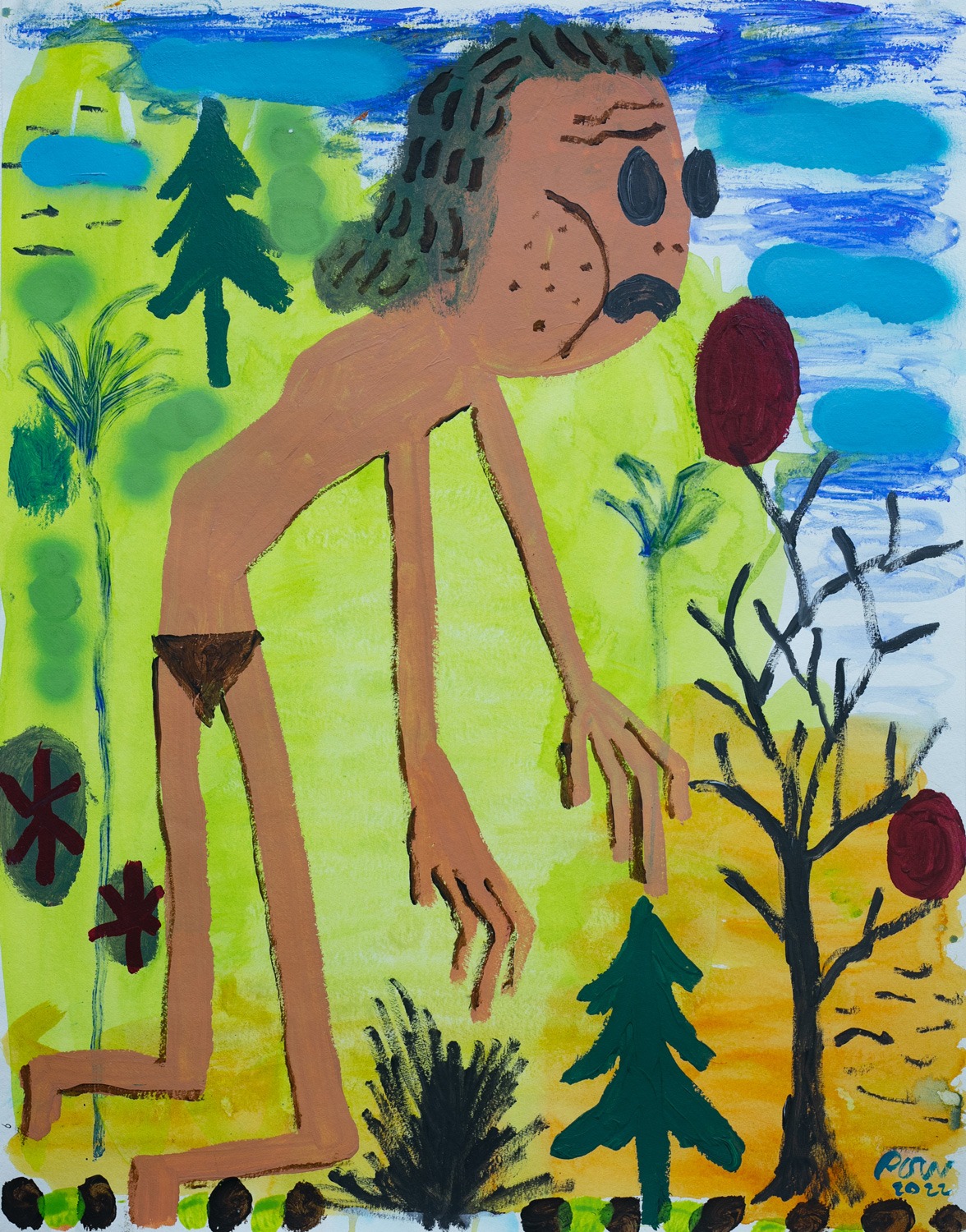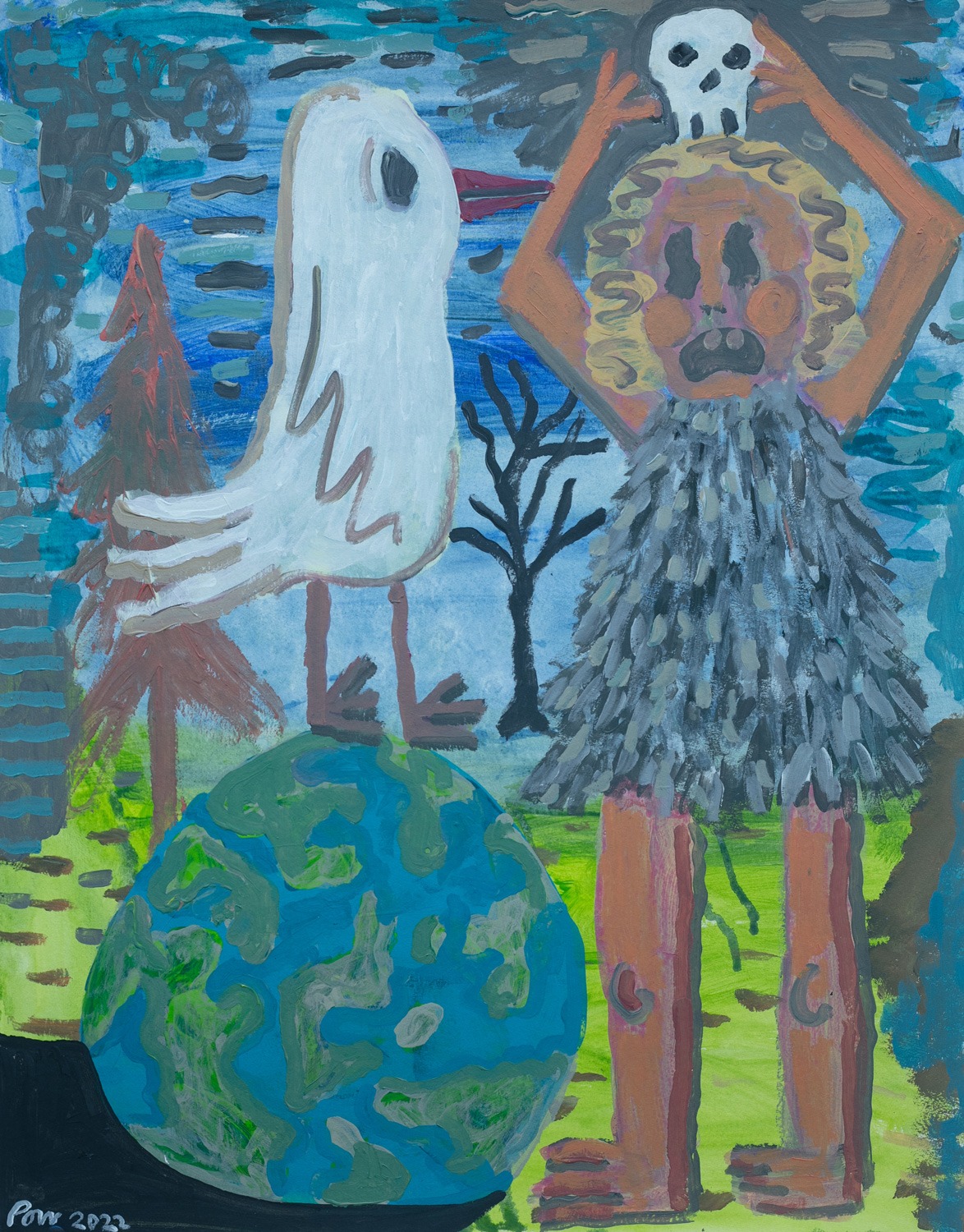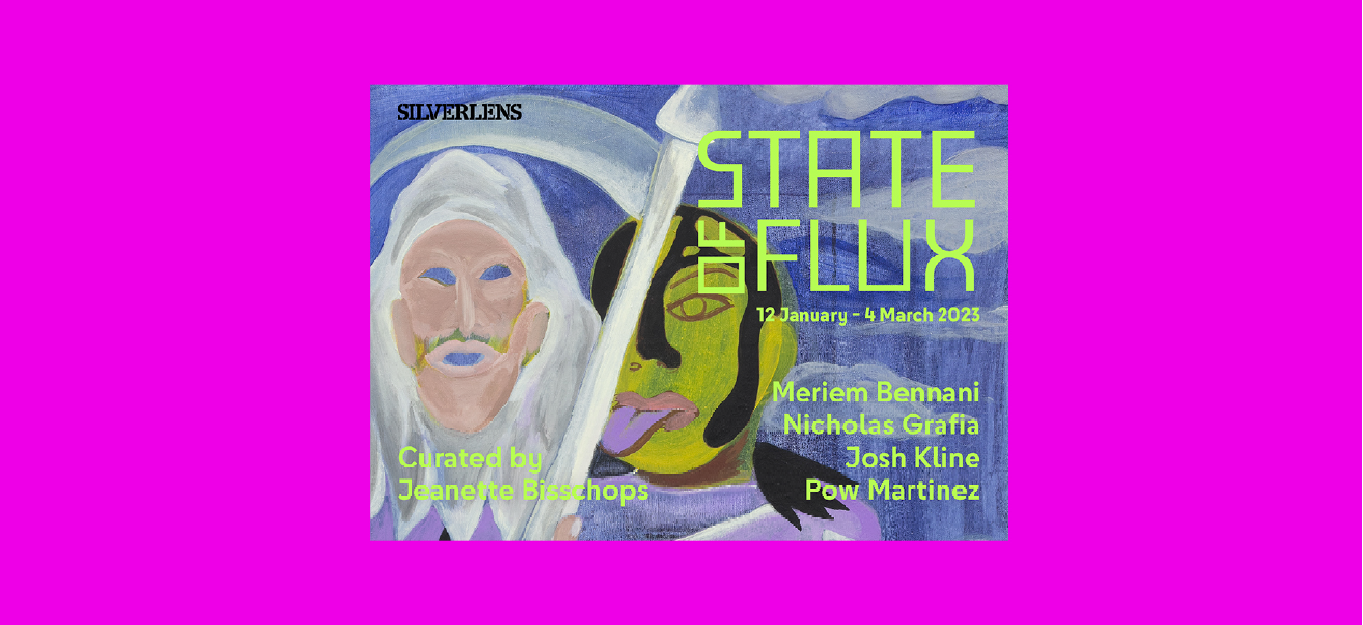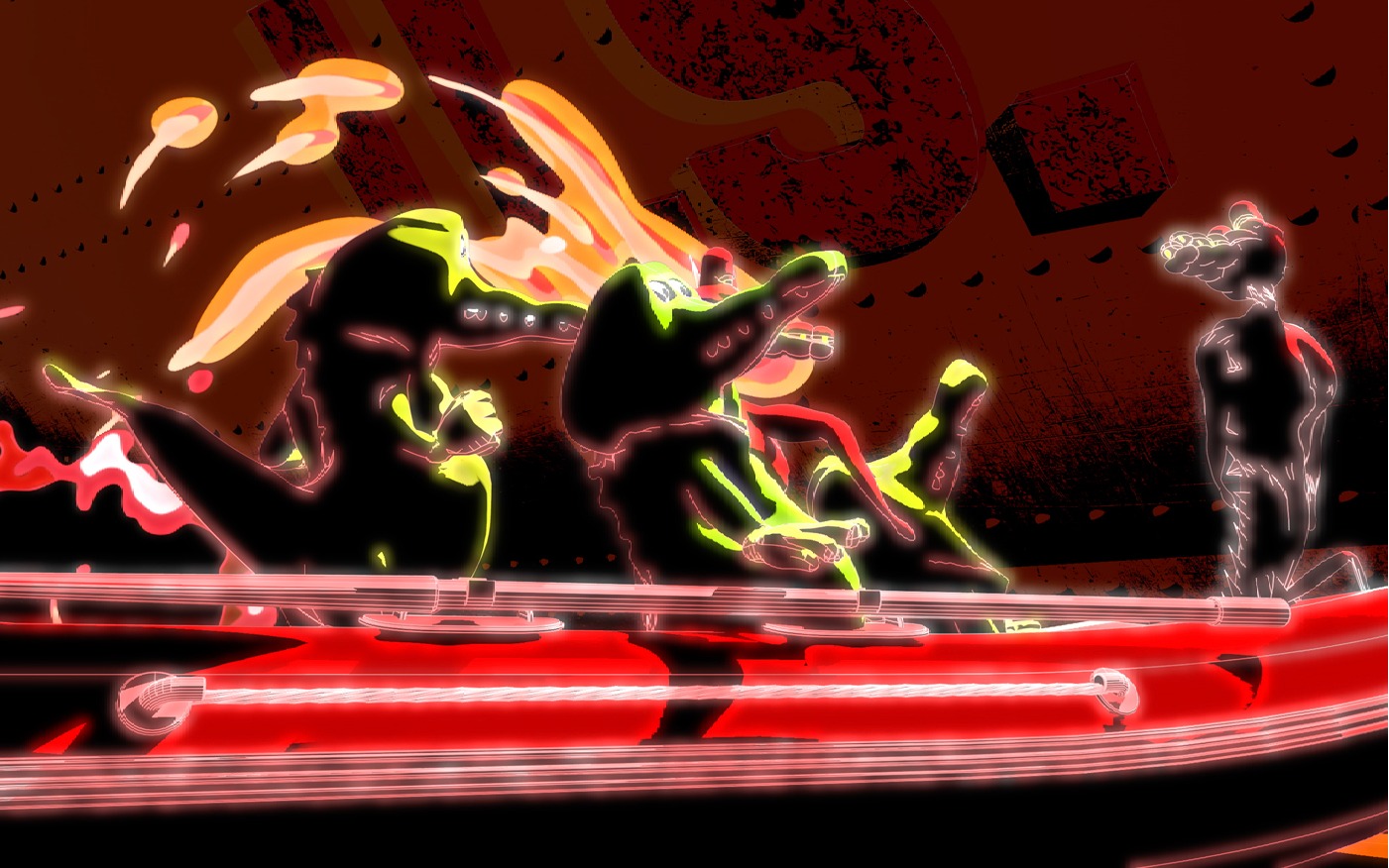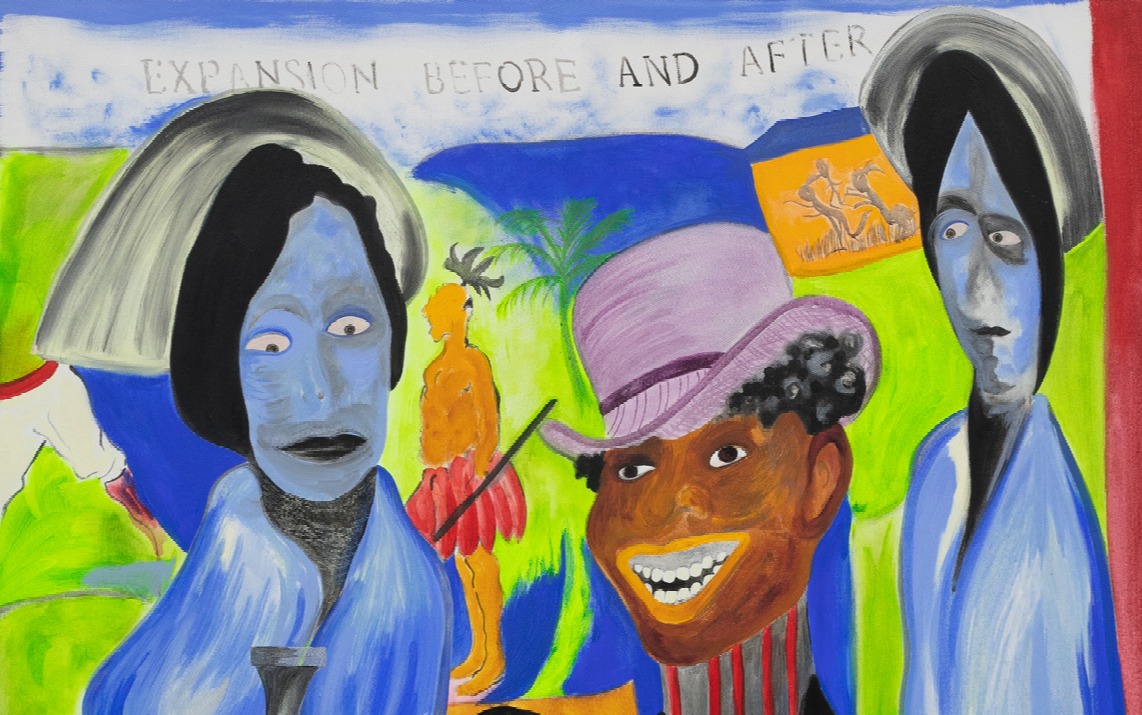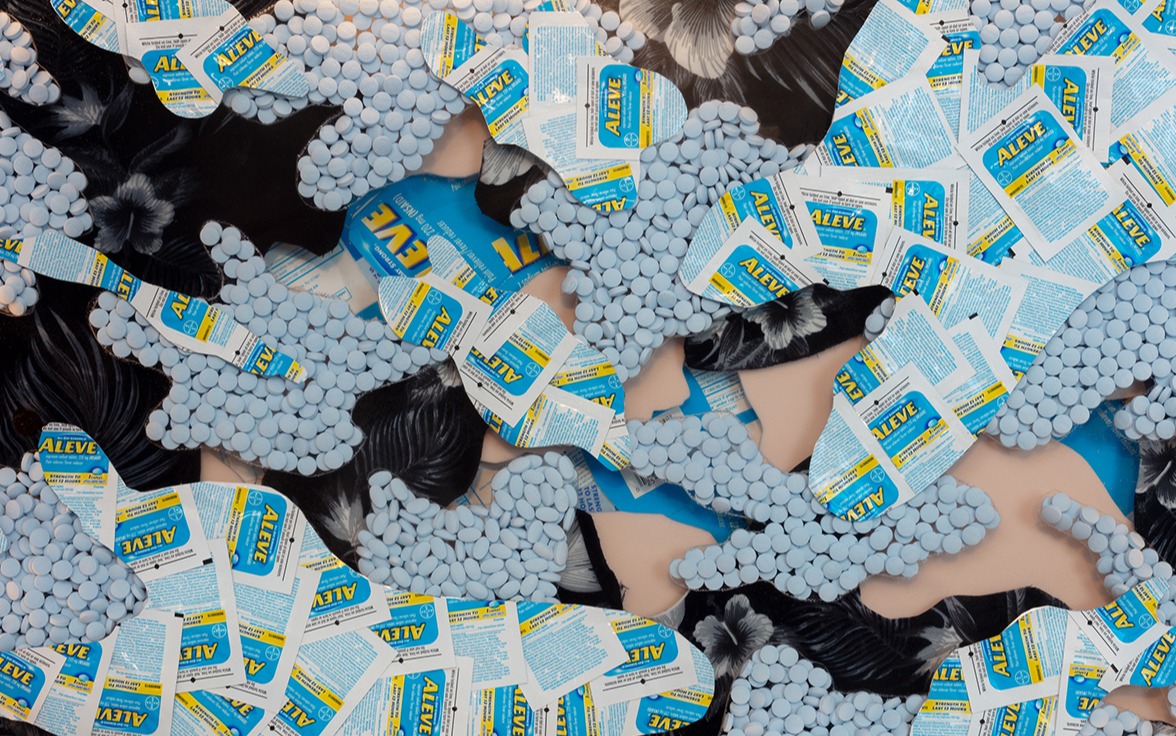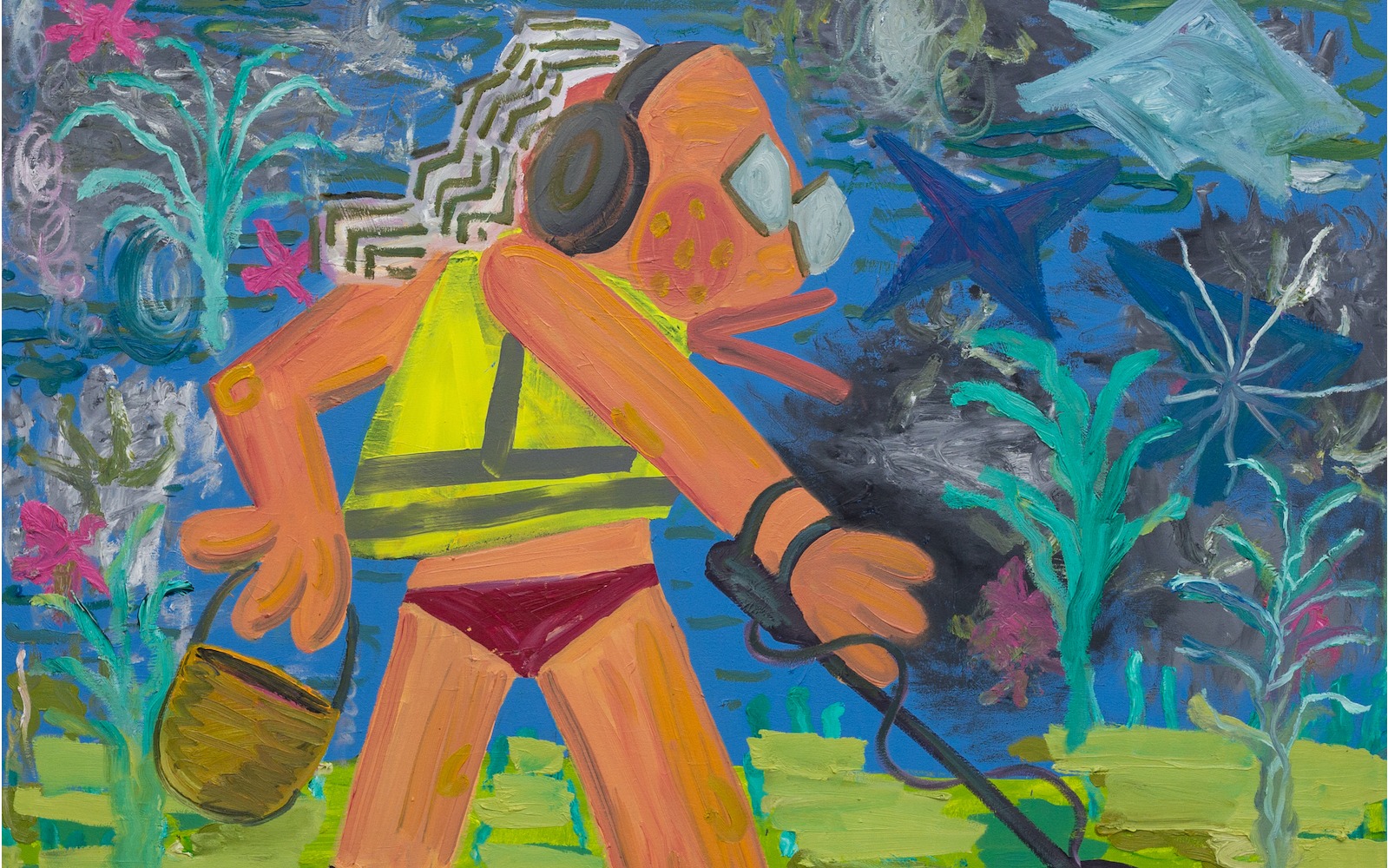
About
“Forms of modern life may differ in quite a few respects – but what unites them all is precisely their fragility, temporariness, vulnerability and inclination to constant change… What was some time ago dubbed (erroneously) "post-modernity" and what I’ve chosen to call, more to the point, "liquid modernity," is the growing conviction that change is the only permanence, and uncertainty the only certainty.”
—Zygmunt Bauman, Liquid Modernity (1999)
State of Flux is a group exhibition that examines the concepts of shapeshifting and humor as protective adaptations to geopolitics and the perils of contemporary existence. The show brings together four artists – Meriem Bennani, Nicholas Grafia, Josh Kline, and Pow Martinez – of the diaspora who wield absurdism to guide viewers through the streams and ruptures of virtual and corporeal life. Their eulogy for our solid form is a comic one, testifying to the idea of shapeshifting as an age-old trait intrinsic to humankind.
Inspired by the curious indeterminacy of Polish sociologist Zygmut Bauman’s analyses, State of Flux explores the idea of liquid modernity, not simply as a process of modern self-actualization, but a state of human society at the threshold of perpetual collapse. What lies therein the act of surviving within the context of repetitive circles of destruction? Using a wide array of mediums and convening from various localities, the artists chart the historical, contemporary and potential future forces that underlay an incessant state of transfiguration, where uncertainty has become a universal narrative. Placing fluidity as a central concern, the exhibition underscores the way it is both weaponized as a tool of power as well as everyday resistance, and implemented to create alternative worlds.
Comprising the exhibition floor of the New York location of Silverlens Gallery, the works included in the exhibition represent cross-disciplinary approaches that incorporate methods of digital animation, performance, and social engagement alongside traditional artistic mediums like painting, drawing, and sculpture.
Picking up on complex motions and effects of interwoven imperialist histories, the exhibition explores a refiguring of form and meaning in a post-truth world. Many of the figures on show could be somehow re-traced to rich folkloric narratives centering tactics of shape-shifting in Southeast Asia and beyond, as well as in science fiction and mythology. With the quality to physically transform oneself through superhuman powers, demonic forces or sorcery, shapeshifting figures can carry within them ideas both of otherness as well as resilience and survival. In this exhibition they often function as a symbol of the liminality of identification; so often a defining quality of diaspora. The contemporary metamorphic imaginary, according to philosopher Rosi Braidotti, contains two contradictory tendencies. A reactive one, expressing the anxieties of a dominant, white, male, hetero identity, whose social and symbolic entitlement is disintegrating. And the active, empowering one, that embodies a shift of perspective that she calls “the process of becoming nomadic subjects.” Her idea of becoming nomadic does not predicate on a stable, centralized self, but rather a multi-layered, non-unitary entity which designs new forms of interaction with otherness, reconstructing the subject-other relationship.
Josh Kline’s readymades respond to Braidotti’s first mode. Building on a long-term body of work in visceral critique of American social-political breakdown, they are literally the elephant in the room as to what resistance contemporary socio-political and economical transformations might evoke. The wooden figures of an elephant, widely recognized as the symbol of the Republican Party originating from a cartoon by political cartoonist Thomas Nast, sit here quietly in a playpen and a stroller. Don’t be fooled by its dormant state though, as its tail contains the ingredients of a match stick, carrying potential for the animal to transform into a weapon of destruction. Kline’s lightboxes calmly shine over us, presenting a camouflage collaged of Ayn Rand novels, Wonder Bread, and Aleve, tempting us into the metamorphic idea of self-actualization to keep us productive as we unravel.
Meriem Bennani’s video work Guided Tour of a Spill explores the power of metamorphosis in a futuristic nomadic subject. In Bennani’s dystopian world, teleportation has replaced air travel, and her fictional island CAPS houses migrants who have been violently intercepted teleporting illegally, often in the middle of their teleportation process. Using their disassembled state to their advantage, merging with the data that leaked into the ocean, they develop transformational modes of defiance in opposition to the US troops who hold them captive. As the ‘CAPS guide’ in Bennani’s video states: “The ocean became a YouTube soup, and you’ve been swimming in it.” Reflecting on how we all have been floating in a world of data and code, circulating through channels of digital and geopolitical power, the artist aptly comments on human and cultural fungibility moving between online and real spaces, just waiting to be disassembled.
Manila-based artist Pow Martinez knows well what it means to live in the YouTube soup. Suggesting he has been doing “what a nature painter might do in a digital landscape,” he wades through endless YouTube feeds that directly inspire his painterly subjects. His work, resembling cartoon frames, snapshots from daily life found on our social media streams, or magazine illustrations, features a large cast of recurring figures, such as soldiers, cavemen, snakes, ghosts, gods and monsters. In his world, all these personas could seemingly switch form in a heart-beat, like snakes shedding their skin, reflecting on how we have become masters of transformation and reimagination of our identities, either in response to the high demands of a capitalist system or as a tactic of empowerment. They also bring to mind the inevitable forces that necessitate a change to survive. Martinez’s little nebulous ghosts float around the space as a playful reminder that our corporeal reality is and has always been a changing and temporary one.
Nicholas Grafia’s figures balance between mythological, folkloric and pop-iconography, successfully finding strategies to transform as to arm and liberate themselves from systematic oppression. His figures move fluidly between genders, skin tones, and time as a magical subversion of global power structures. His work draws direct links between modern civilization and colonial history, its subjects ready to shapeshift into something else at any moment, carrying the inherent traits of adaptability that marginalized subjects have always had to inhabit. The presentation of his performance Peasants together with collaborator Mikołaj Sobczak exposes direct links between contemporary social hierarchies and historical slavery movements, imperialism and serfdom. Using spoken word, choreography, and disguise, they present the viewer with negotiations of social codes, linguistic practices and rituals found in communities throughout the Philippines, Jamaica, the UK and Poland.
A visible thread throughout the exhibition is the use of absurdism and humorous play as a strategy to confront or mediate ongoing social upheaval, a tactic historically channeled by the oppressed. With its ambiguous nature, ever evading simple categorization, humor here functions as its own shapeshifter offering a new way into viewing and dealing with contemporary existence. While waves of historical occurrences wash over us, a sense of humor about it all may keep us standing. Can we construct new systems of thought that can help us think about change and living transitions in an affirmative fashion? Will we come out of this time transformed, perhaps even transcendent? As the main character in Bertolt Brecht’s play about the forced transformation of an citizen into a soldier (Mann ist Mann (Man Equals Man)) says;
"Don’t try to hold onto the wave that’s breaking against your foot. So long as you stand in the stream, fresh waves will always keep breaking against it."
– Jeanette Bisschops
Jeanette Bisschops is an independent Dutch curator, art critic and writer residing in New York. She was Curatorial Fellow at the New Museum, New York between 2019 and 2022 and served as Curatorial Assistant for Time-Based Media at the Stedelijk Museum Amsterdam between 2016-2019. She holds a Master’s in Psychology from Maastricht University and a Master’s in Art History from the University of Amsterdam.
Meriem Bennani (b. 1988, Rabat, Morocco; lives and works in New York) received her BFA from Cooper Union, New York in 2012, and her MFA from the Ecole Nationale Supérieure des Arts Décoratifs, Paris in 2011. Solo exhibitions of her work have been held at C L E A R I N G Brooklyn; The Kitchen, New York; Fondation Louis Vuitton, Paris; Art Dubai; MoMA PS1, New York; and SIGNAL, Brooklyn. Her work has also been featured in numerous group exhibitions, including Whitney Biennial, New York; Biennale de l’Image en Mouvement, Geneva / Turin; Public Art Fund, New York; Shanghai Biennale; Jewish Museum, New York; Saatchi Gallery, London; MANA Contemporary, New Jersey; and Palais de Tokyo, Paris. Her exhibition, Party on the CAPS, is currently on view at the Julia Stoschek Collection, Berlin. Later in 2020, she will have a public commission at LAX airport. Meriem Bennani’s work is part of the collections of the Guggenheim Museum, New York; Whitney Museum of American Art, New York; Musée d’Art Moderne de Paris; Fondation Cartier, Paris; Kadist Foundation, Paris; and FRAC Ile-de-France, Paris.
Nicholas Grafia (b.1990, Angeles City; based in Düsseldorf, Germany, and Paris, France), holds an MFA from the Kunstakademie Düsseldorf (DE). He has previously studied at the School of Arts and Cultures in Newcastle (UK), the Kunstakademie Münster (DE), as well as the University of Münster (DE).
His paintings, videos and performances negotiate processes of memory formation, as well as the in- and exclusion of subjects from history writing.
His work has been recently exhibited at KW (Berlin, DE), MoMa (Warsaw, PL), HKW (Berlin, DE), Kunsthal Aarhus (Aarhus, DK), Bergen Kunsthall (Bergen, NO), 7th Moscow International Biennale For Young Art (Moscow, RU), Shedhalle (Zurich, SUI), Museum Ludwig (Cologne, DE), Dortmunder Kunstverein (Dortmund, DE), and MUDAM (Luxembourg, LU), and Silverlens Manila (Manila, PH) amongst other venues.
Josh Kline’s (b. 1979, Philadelphia, PA; lives and works in New York, NY) recent solo exhibitions include Fondazione Sandretto Re Rebaudengo, Turin (2016); Portland Art Museum, Portland, OR (2016); 47 Canal, New York City, NY (2016); and Modern Art Oxford, Oxford (2015). Kline has been included in groups shows such as Human Interest: Portraits from the Whitney’s Collection, the Whitney Museum of American Art, New York City, NY (2016); the Fellbach Small Sculpture Triennial, Fellbach (2016); 9th Berlin Biennale, Berlin (2016); Life Itself, Moderna Museet, Stockholm (2016); Suspended Animation, Hirschorn Museum and Sculpture Garden, Washington D.C. (2016); America is Hard to See, Whitney Museum of American Art, New York, NY (2015); Overtime: The Art of Work, Albright Knox Art Gallery, Buffalo, NY (2015); 2015 Triennial: Surround Audience, New Museum, New York City, NY (2015); Looking Back/The 9th White Columns Annual, White Columns, New York City, NY (2015); ica@50: Pleasing Artists And Publics Since 1963, Institute of Contemporary Art, Philadelphia, PA (2014); Speculations on Anonymous Materials, Fridericianum, Kassel (2013); and New Pictures of Common Objects, MoMA/PS1, Long Island City, NY, USA (2012).
In Spring 2023, the Whitney will present the first U.S. museum survey of the artist's work. This exhibition is organized by Christopher Y. Lew, former Nancy and Fred Poses Curator at the Whitney and current Chief Artistic Director at the Horizon Art Foundation, with McClain Groff, Curatorial Project Assistant.
Pow Martinez (b. Manila, Philippines, lives and works Manila) is a recipient of the 2010 Ateneo Art Award for his exhibition 1 Billion Years at West Gallery, Philippines. His recent exhibitions include Clunker (2022) at Silverlens Manila, Underground Spiritual Unit (2022) at Galeria Yusto/Giner, Madrid, City Prince/sses (2019) at Palais de Tokyo in Paris, 50 Years in Hollywood (2019) at Pinto Art Museum in New York, and Aesthetic Police (2018) at ROH Projects, Jakarta. Through his comically distorted portraits and satirical paintings, Martinez is known for his commentary on the medium of painting, social media culture, and Philippine history.
Installation Views
Works
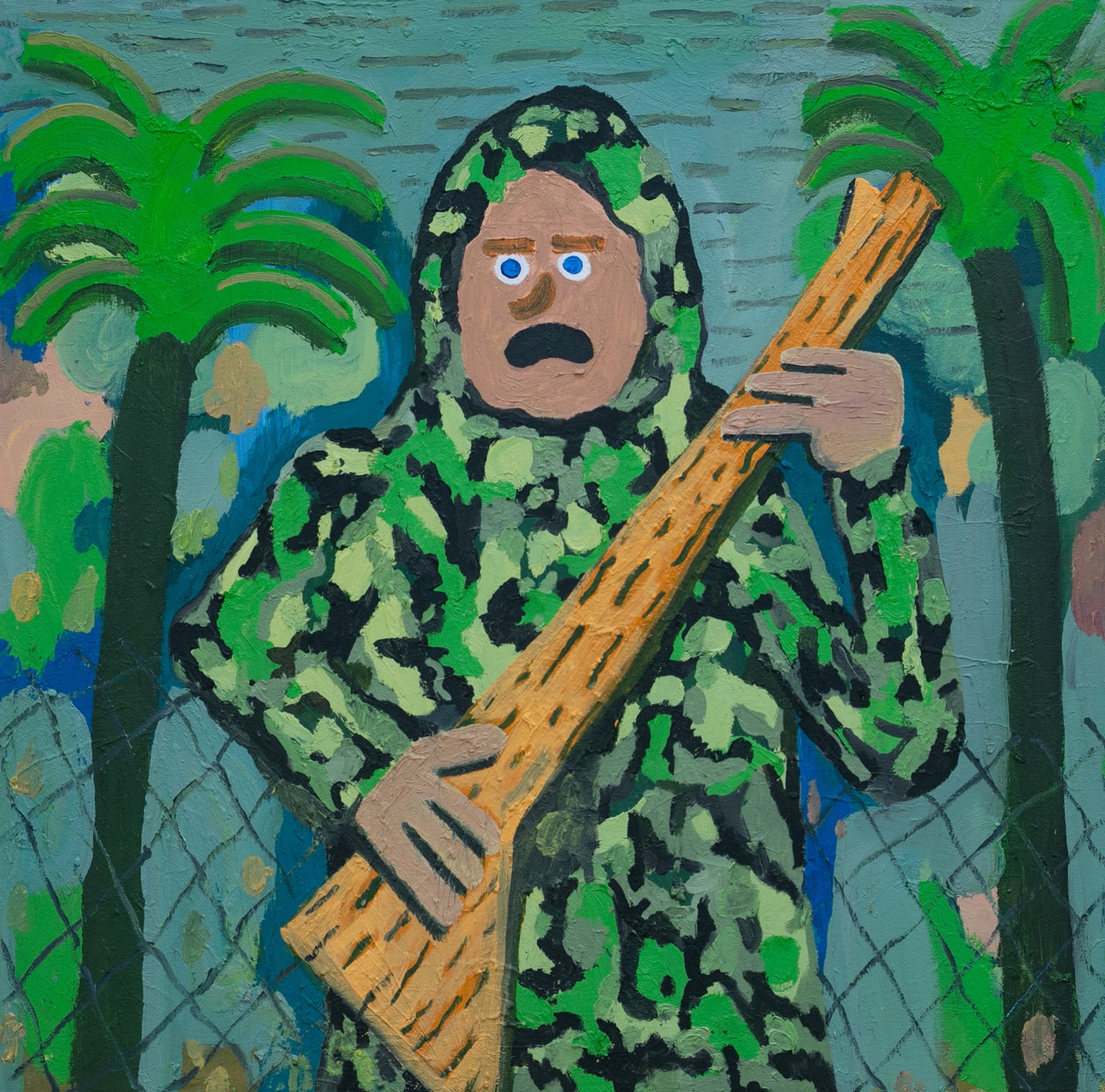
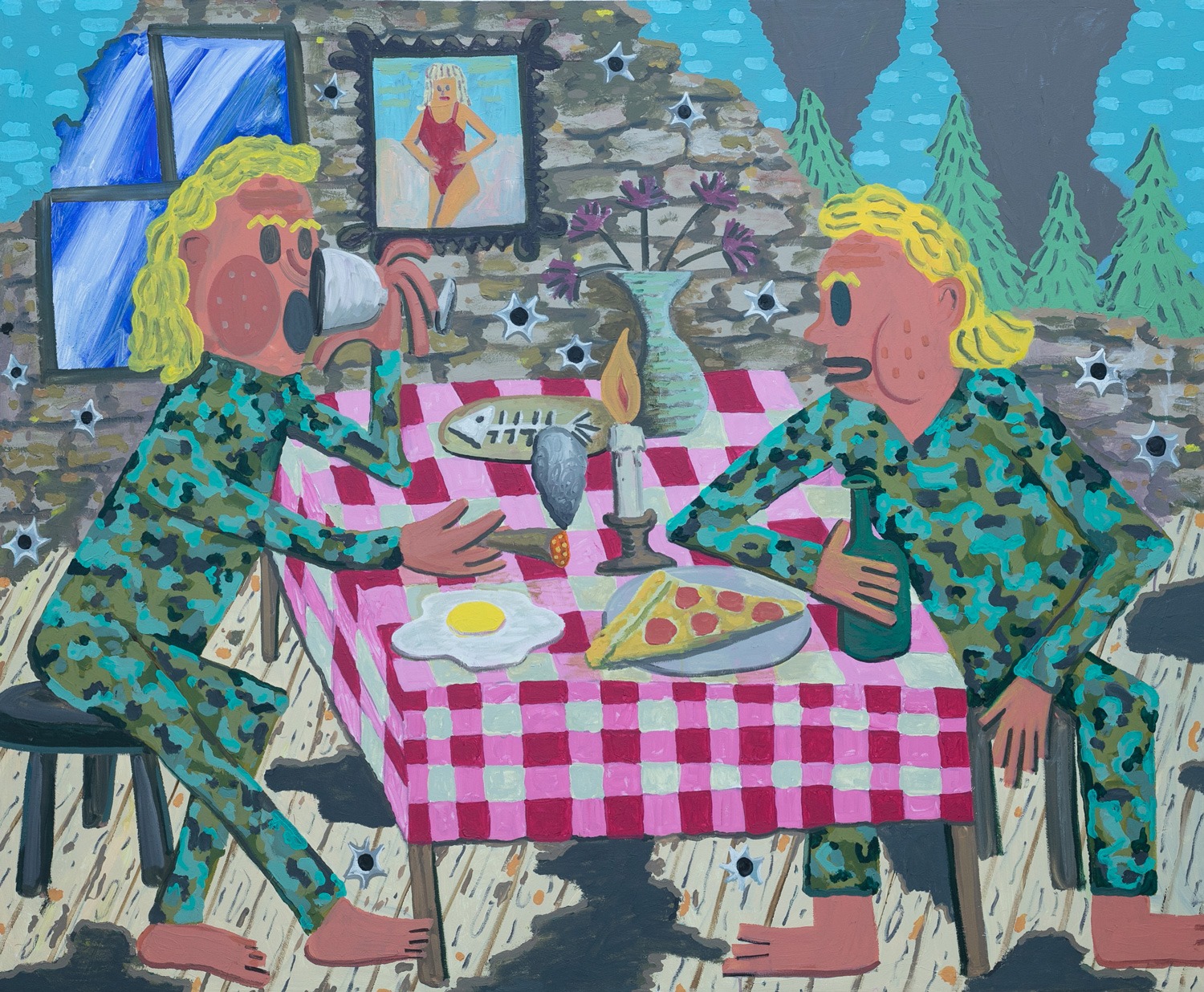
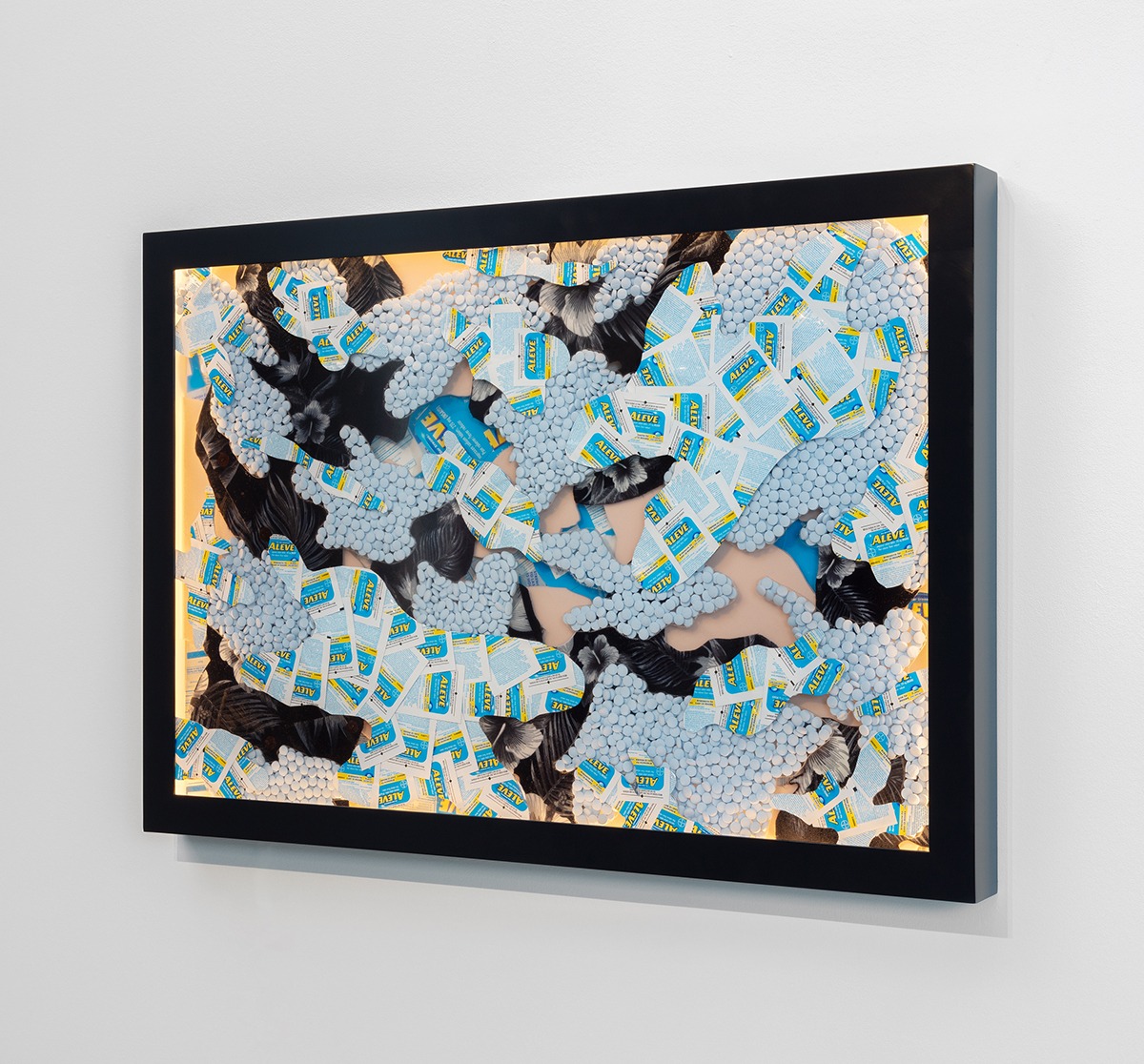
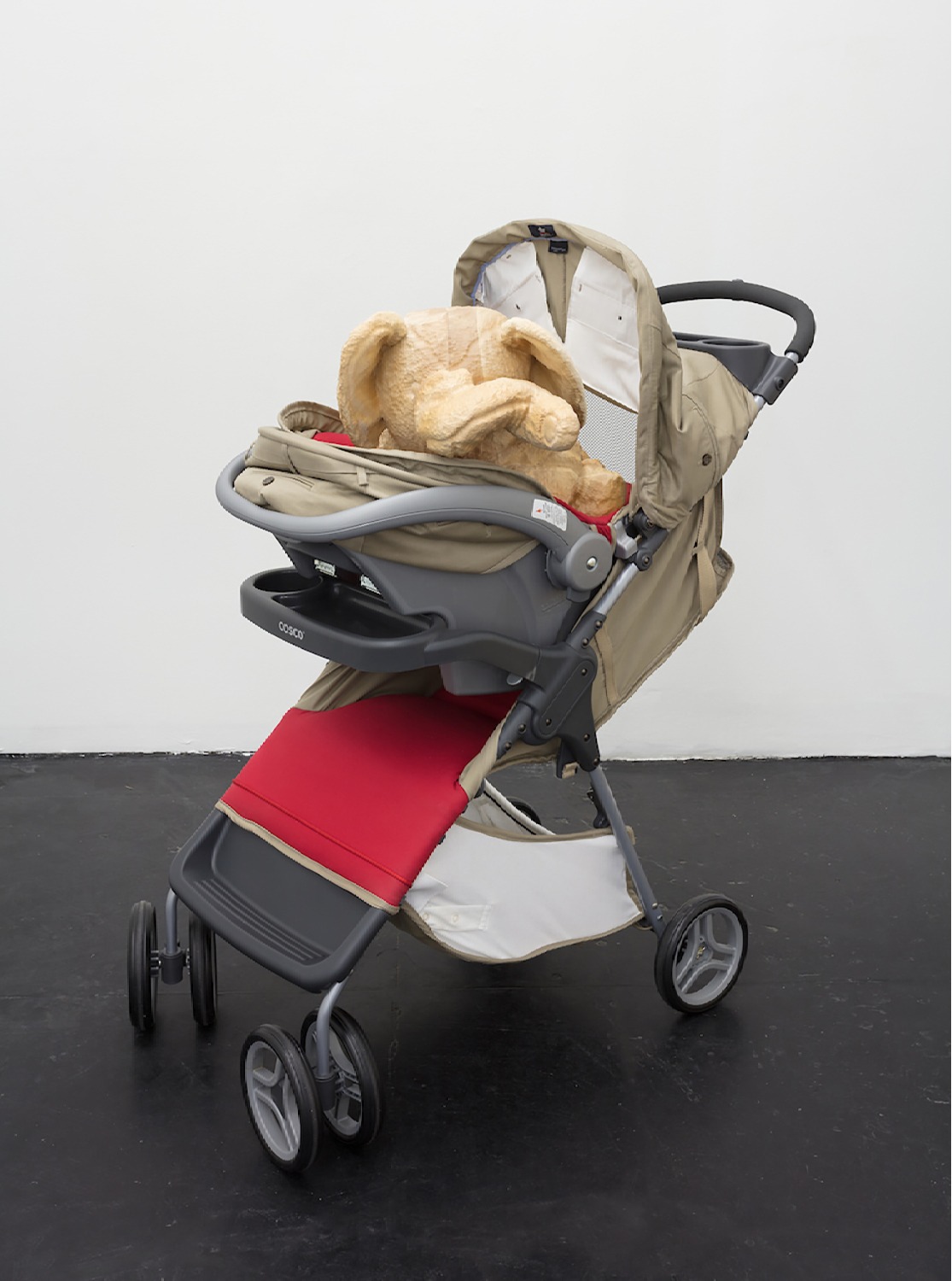
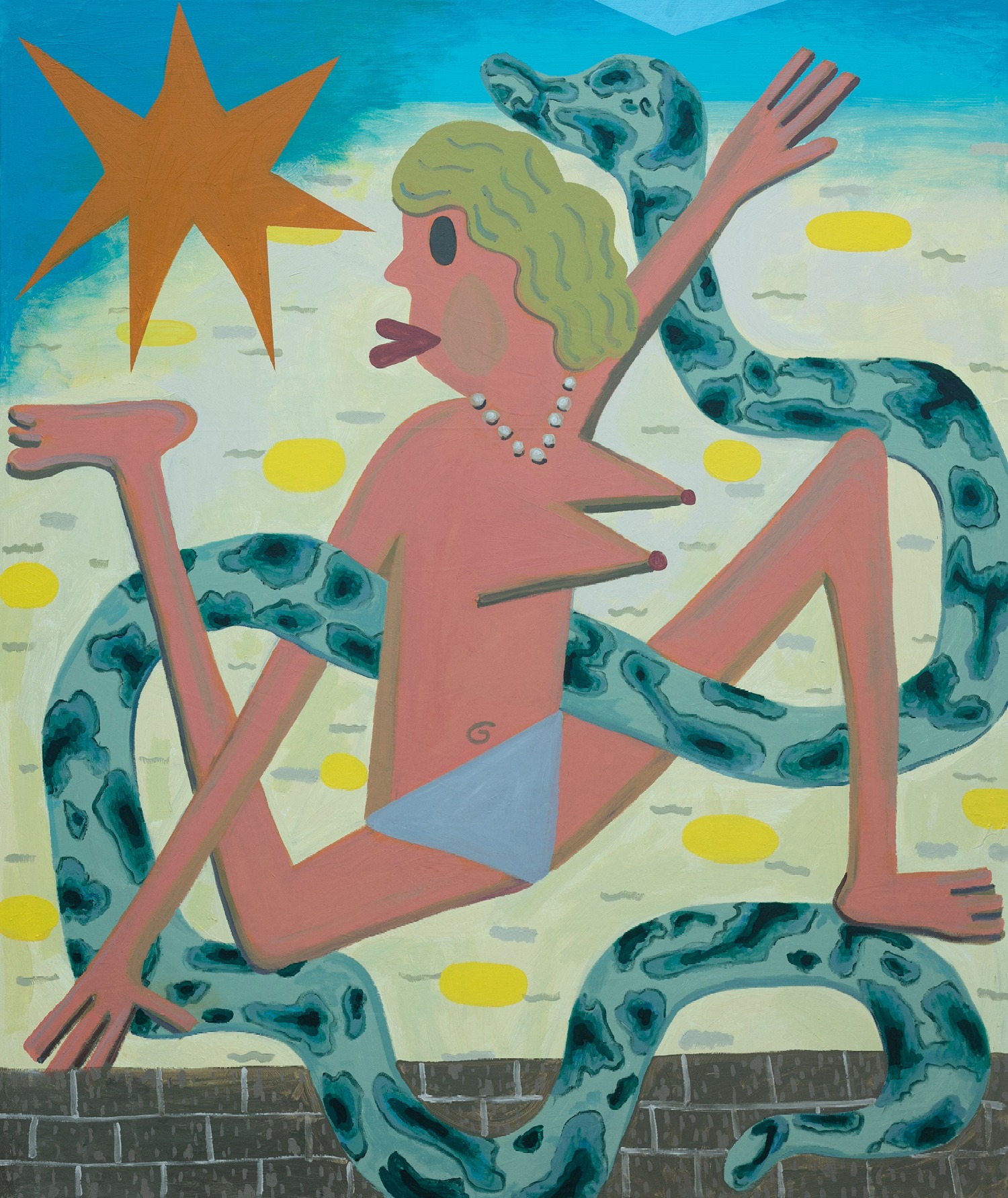
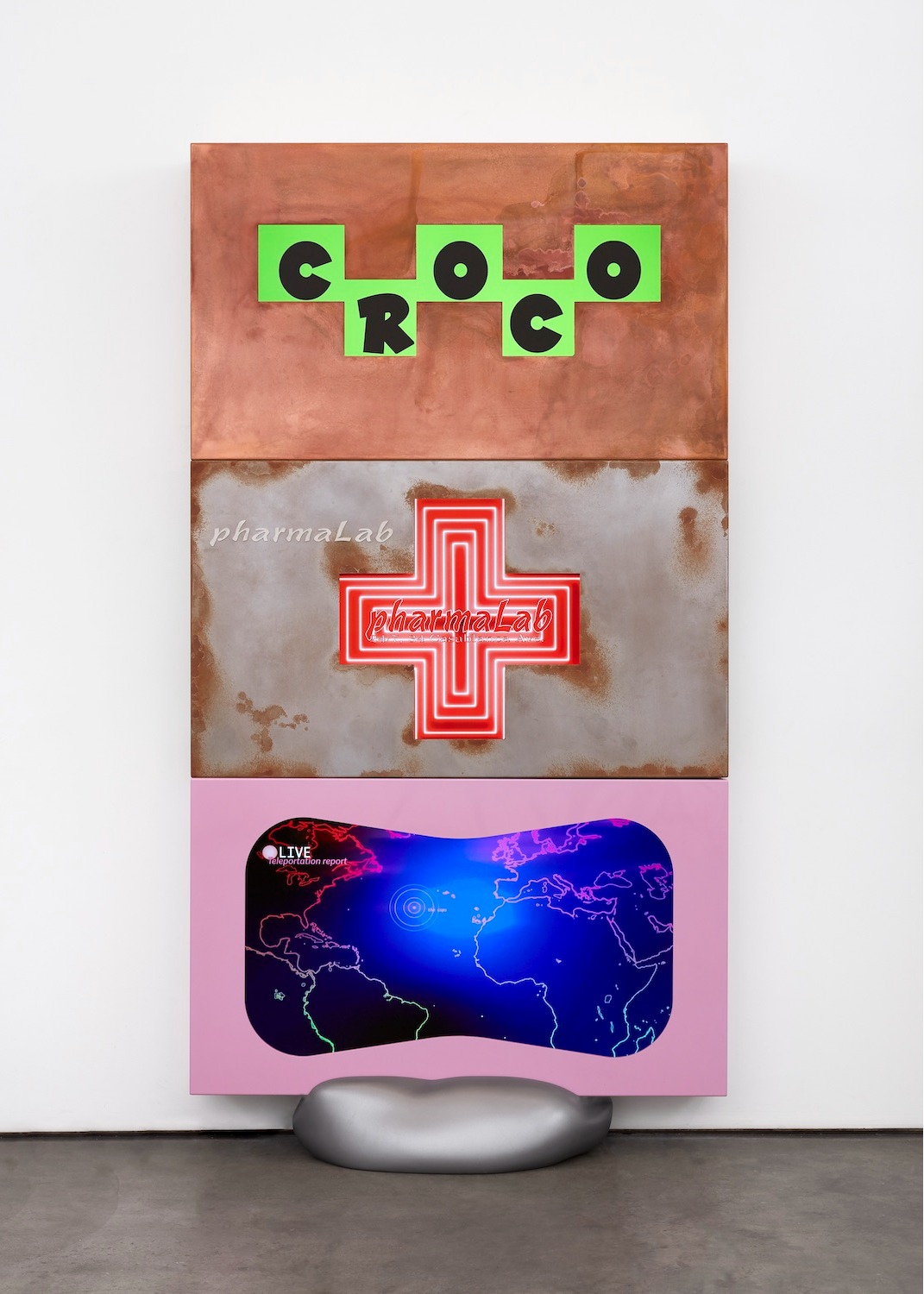
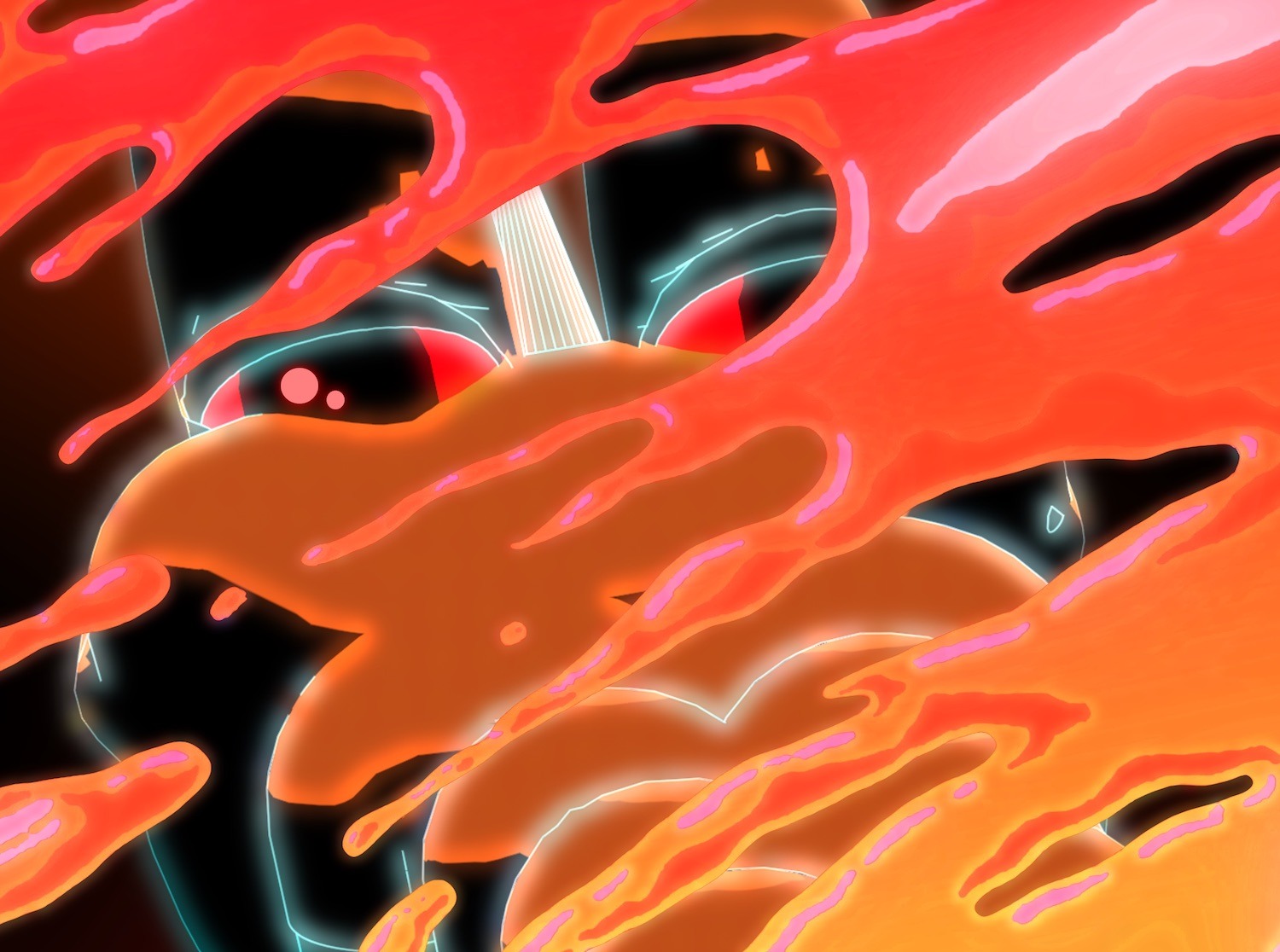
Film stills and trailer courtesy of the Artist and François Ghebaly, Los Angeles
